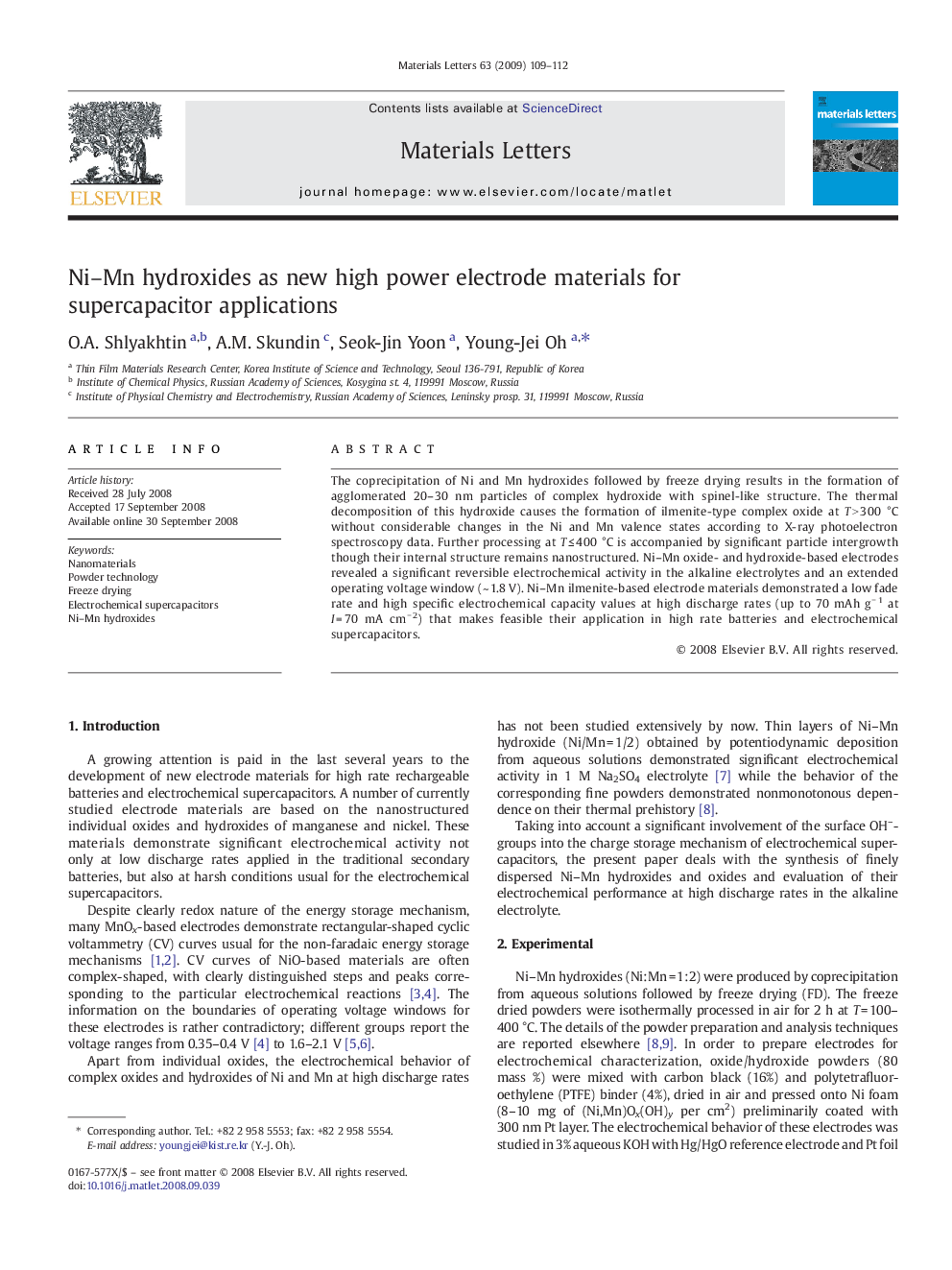| Article ID | Journal | Published Year | Pages | File Type |
|---|---|---|---|---|
| 1649968 | Materials Letters | 2009 | 4 Pages |
The coprecipitation of Ni and Mn hydroxides followed by freeze drying results in the formation of agglomerated 20–30 nm particles of complex hydroxide with spinel-like structure. The thermal decomposition of this hydroxide causes the formation of ilmenite-type complex oxide at T > 300 °C without considerable changes in the Ni and Mn valence states according to X-ray photoelectron spectroscopy data. Further processing at T ≤ 400 °C is accompanied by significant particle intergrowth though their internal structure remains nanostructured. Ni–Mn oxide- and hydroxide-based electrodes revealed a significant reversible electrochemical activity in the alkaline electrolytes and an extended operating voltage window (~ 1.8 V). Ni–Mn ilmenite-based electrode materials demonstrated a low fade rate and high specific electrochemical capacity values at high discharge rates (up to 70 mAh g− 1 at I = 70 mA cm− 2) that makes feasible their application in high rate batteries and electrochemical supercapacitors.
